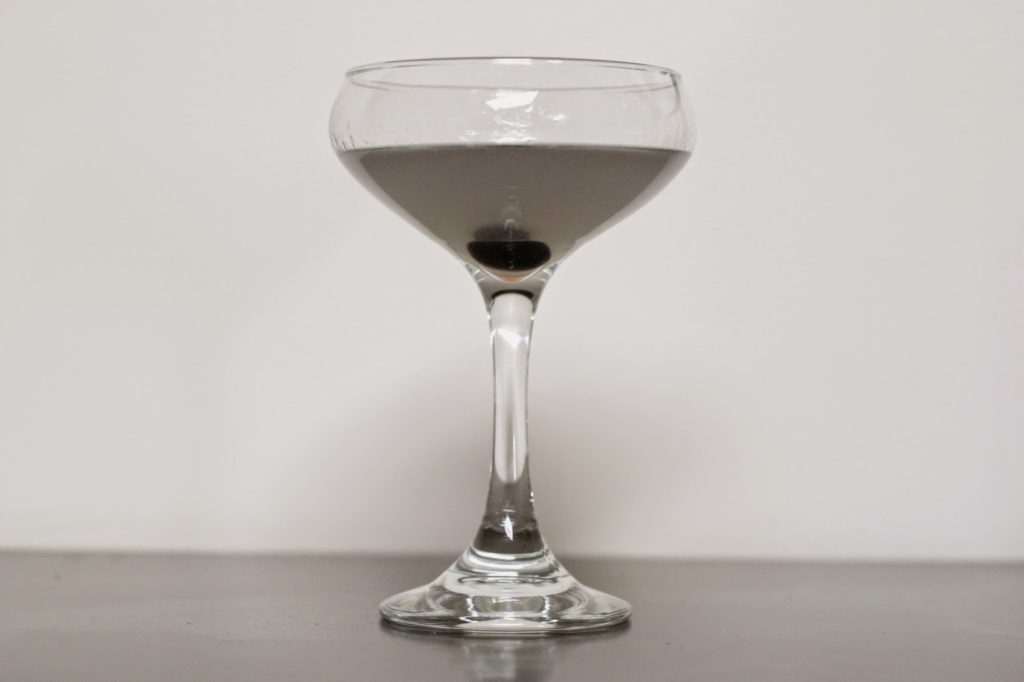This is the cocktail that got me into cocktails. I first tried it at Eastern Standard, one of my favorite cocktail bars in Boston. The gin melded perfectly with the taste of cocktail ingredients I’d never tried or heard of before. The finished product was deliciously tart and very unique. I would have made this my first post, but it
contains a couple of intimidating ingredients that most people don’t have on hand: Luxardo Maraschino Liqueur and Crème de Voilette. We talked about Luxardo on Monday. Crème de Voilette, however, is a new ingredient. I haven’t made it a “bottle buy” because so far this is the only recipe I know of that uses it, though I’m determined to find some others. I’d definitely try ordering an Aviation at a local bar and seeing if you like it before you splurge on this very specific ingredient. If nothing else, the bottle is adorably retro.
And don’t forget a jar of Luxardo maraschino cherries; eating the garnish when you’re finished this cocktail is the only thing that will keep you from being sad that your glass is empty.
Aviation
3/4 oz. lemon juice
1/4 oz. maraschin liqueur
1/4 oz. Creme de Voilette*
*Some may find this much Crème de Voilette a bit much. Other recipes call for merely rinsing the glass with it; try this for a more subdued flavor. I think Eastern Standard’s recipe is something in between, but I like the full quarter ounce.







Hola! I like to make my Aviations with 2 oz Plymouth Gin, 1/2 oz Lemon Juice, 2 tsp Maraschino, 1 tsp Violette and a cherry.
As far as "what else to make with Violette", there are a fair number of Tequila recipes that use Violette such as this fabulous one on Jezebel: http://kitchenette.jezebel.com/how-to-make-the-west-coast-whisper-a-hella-chill-tequi-1700003727
cheers!